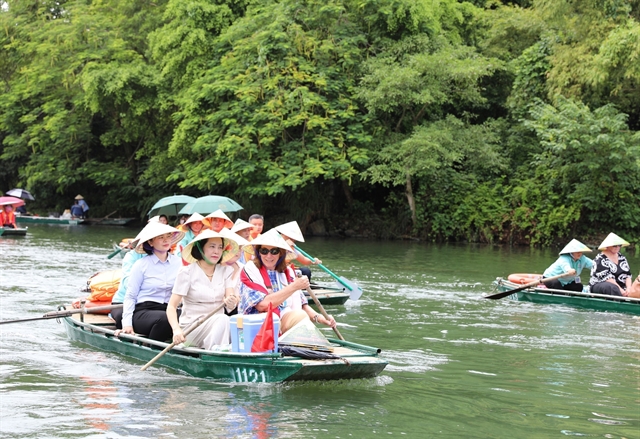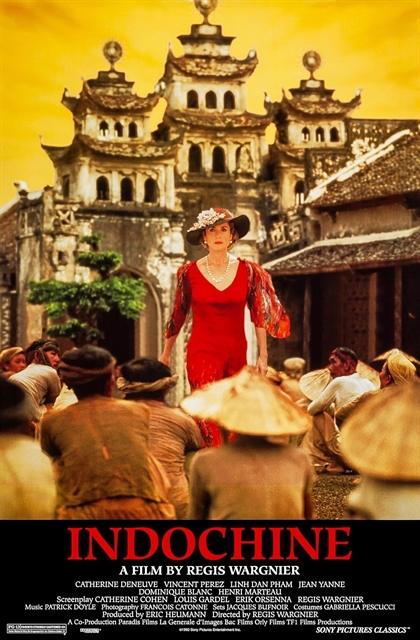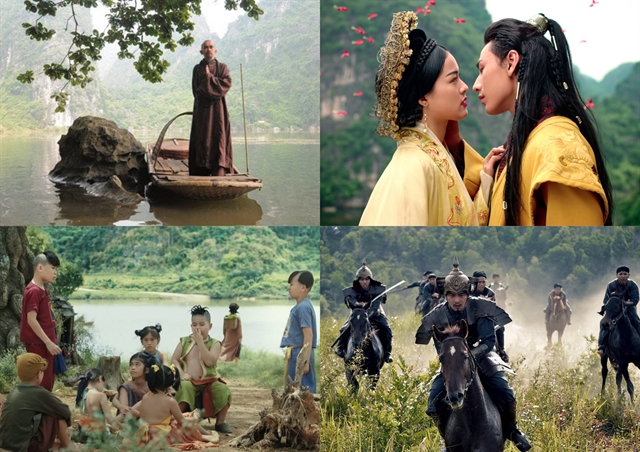 Life & Style
Life & Style

 |
| A scene of the Tràng An Scenic Landscape Complex. Photo Đào Minh Tiến |
Trần Khánh An
Ninh Bình boasts rich natural landscapes and numerous famous tourist attractions, most notably the UNESCO World Heritage Site of the Tràng An Scenic Landscape Complex.
The complex includes Hoa Lư, the capital of Việt Nam's first centralised feudal state, reigned by three dynasties -- Đinh, Lê and Lý -- from 968 to 1010.
Ninh Bình is home to multiple historical, cultural and spiritual heritage sites, national treasures, and intangible cultural heritage items, all of which are being preserved and enhanced. These assets have made tourism a key development sector for the province and attracted numerous film productions.
Over the past 30 years, Ninh Bình has become a filming location for numerous international films, including The Quiet American, Les Filles du Botaniste (The Two Daughters of the Herbalist), and Kong: Skull Island.
Vietnamese feature films and television series, particularly those with historical themes, have also been shot here, including Thiên Mệnh Anh Hùng (Blood Letter), Khát vọng Thăng Long (The Desire for Thăng Long), and Tấm Cám: Chuyện chưa kể (Tấm Cám: The Untold Story).
Potential outcomes
The French film Indochine, featuring the Tam Cốc Bích Động scenic landscape, became one of the most successful foreign films shot in Việt Nam, winning the Oscar for Best Foreign Language Film in 1992.
Bùi Văn Mạnh, director of the Ninh Bình Department of Tourism, said that after the film’s release, the province became a tourist magnet, particularly among French visitors.
"In recent years, French and European tourists account for 80 per cent of the visitors to Tam Cốc Bích Động, significantly changing the area's tourist demographic, which previously saw very few international visitors," he said.
 |
| The poster of the 1992 French film 'Indochine'. Photo courtesy of Paradis Films |
"Film has played a crucial role in promoting natural landscapes, cultural values, and historical heritage to the public, helping to attract tourists and boost local socioeconomic development," he added.
Recognising the benefits of tourism and the role of the film industry, the province aims to become a cultural and historical heritage centre, leveraging its film potential alongside tourism and culture industries as key drivers of economic development.
“Ninh Bình has the potential to become a film production hub for both Hollywood blockbusters and Vietnamese films and TV series, promoting the culture, tourism, and people of the ancient capital with a thousand years of civilisation,” said Phạm Quang Ngọc, chairman of the Ninh Bình Provincial People's Committee [Administration].
Goals through action
Ninh Bình plans to restore historic sites, such as the ancient capital of Hoa Lư, for use as settings in historical and traditional films.
Last month, representatives of the province participated in the Việt Nam Tourism-Cinema Promotion Programme in the United States, and attended the Busan International Film Festival in South Korea to promote its tourist destinations, showcase filming locations, and learn from international experts.
The People's Committee of Ninh Bình Province has collaborated with the Việt Nam Film Development Association (VFDA) to develop the film industry, focusing on the Production Attraction Index (PAI) to evaluate how interested provinces are in offering filming locations.
 |
| Some Vietnamese films were set in Ninh Bình, including (clockwise from left) 'Thiên Mệnh Anh Hùng' (Blood Letter), 'Tấm Cám: Chuyện chưa kể' (Tấm Cám: The Untold Story), 'Khát vọng Thăng Long' (The Desire for Thăng Long), and 'Trạng Tí phiêu lưu ký' (Diary of Child Master’s Adventure). Photos courtesy of Phương Nam, VAA Productions, Kỷ Nguyên Sáng and Studio68 |
“PAI is an important initiative to position Việt Nam as an attractive destination for foreign film crews, creating value for the film industry as well as supporting sectors like tourism, hospitality, and services,” said Tạ Quang Đông, deputy minister of Culture, Sports and Tourism.
“I hope this cooperation programme will serve as a model for successfully developing local cinema in Việt Nam and establishing a thriving film industry in Ninh Bình.”
More than a film location
Experts suggest that Ninh Bình should focus on more than simply being a film location with stunning landscapes and logistical support. The province is advised to develop a comprehensive film industry ecosystem by revising supportive policies and hosting domestic and international film events to promote collaboration and investment.
"When making a film, we should avoid commercialising it as a mere promotional tool for tourism. The primary goal should be to create works of art, as the quality of the film will ultimately promote local destinations,” Ngô Phương Lan, chairwoman of VFDA, said.
Nguyễn Phương Hoà, director of the ministry of culture's Department of International Cooperation, said that Ninh Bình’s history, culture, and heritage could serve as rich material for cinema. With its profound culture, Ninh Bình has the potential to share its own remarkable story with the world.
"The province should enhance international connections by participating in the UNESCO Creative Cities Network, expanding opportunities for cooperation and investment,” she said.
She also recommended the province focus on developing local talent in the cultural industry by fostering creativity within the community, particularly among the youth.
"Ninh Bình should nurture creative individuals within the province and attract talent from the creative and film industries," she added. VNS